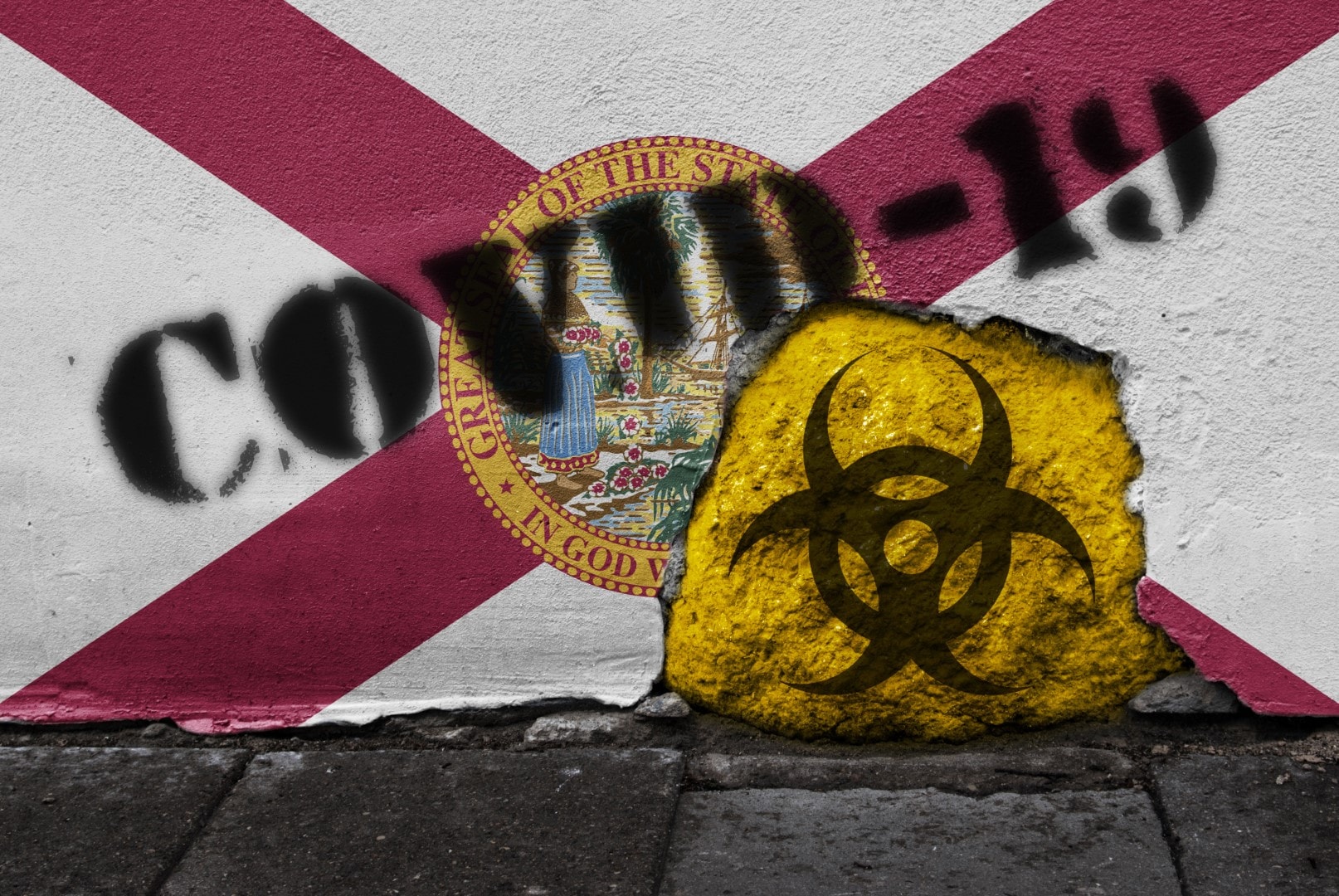
Nine months into the coronavirus pandemic in Florida, the state became the third state to record more than 1 million COVID-19 cases.
On Monday, the Department of Health reported enough diagnoses to put Florida at the edge of 1 million cases. With 8,847 new infections reported Tuesday, the department now lists 1,008,166 cases in the Sunshine State, including 16,256 nonresidents.
Florida, the third most populous state, is only behind California and Texas in the total count of new cases. Officials in California have reported 1.21 million cases while officials in Texas have confirmed 1.17 million cases.
DOH also reported 82 new coronavirus-related deaths in Tuesday’s update, raising the death toll among residents to 18,679. Officials confirmed no nonresident deaths, but a total of 237 have succumbed to COVID-19 in the state.
Nine months ago, after officials confirmed the first COVID-19 cases in Florida on March 1, Gov. Ron DeSantis ordered Surgeon General Scott Rivkees to declare a public health emergency in the state. Eight days later, DeSantis issued a state of emergency, and both orders remain ongoing.
After the initial outbreak of new cases, at a time when access to coronavirus testing was low, officials had identified about 20,000 COVID-19 cases in Florida, recording just over 1,300 cases in a single day. After outbreaks subsided throughout April and May, cases began spiking in June and peaked at more than 15,000 cases in mid-July. In July alone, officials confirmed more than 300,000 new cases and the state’s total reached 470,386 by the end of the month.
Since October, cases have been on the rise again, peaking at more than 10,000 new cases reported in one day on Wednesday. Less than two weeks ago, Florida crossed 900,000 COVID-19 cases.
The latest resurgence in coronavirus outbreaks has been a gradual increase in daily cases as opposed to the spike observed in the summer.
Tuesday’s new data includes cases detailed between Monday morning and Tuesday morning. For all-day Monday, officials counted 8,632 cases from 111,627 residents tested. Among the new positives, the median age was 39.
While the state has seen a resurgence of outbreaks, so too has most of the country, particularly the upper Midwest. Last month, the U.S. surpassed 10 million cases.
Thanksgiving could lead to another uptick in new cases, with travel reaching its highest level since the beginning of the pandemic. A possible spike is already unfolding in the state’s positivity rates.
The positivity rate for new cases began increasing again the day after Thanksgiving, nearly neutralizing two weeks of improvements since positivity rates topped 10% last month. On Thursday, the positivity rate was down to 6.2% but returned to 8.7% Monday, the highest since mid-November.
Notably, COVID-19 cases and deaths reported by state health officials can sometimes be reported days or weeks later.
For months, in Florida, DeSantis has shifted the state’s data focus away from the raw count and percent positivity rates, pointing instead to hospital visits with symptoms related to COVID-19 as his preferred metric.
After peaking at 15,999 coronavirus-related hospitalizations the week of July 5, DOH reported that hospitalizations declined. For five consecutive weeks as of two weeks ago, the state has recorded week-over increases in hospitalizations.
Last week showed a downturn in new hospitalizations, from 7,858 two weeks ago to 6,817 last week. Officials may still update last week’s count and instead show an increase, as has happened in past weeks.
As of Tuesday, 55,197 Floridians have been hospitalized after DOH recorded 333 new hospitalizations. The Agency for Health Care Administration reports that 4,279 people are currently hospitalized with the disease, an increase of 120 in about 24 hours.
During his first press conference since the beginning of the month, the Governor on Monday announced that schools would remain open during the spring semester and reaffirmed his opposition to lockdowns and mask mandates. He added that preparing for COVID-19 vaccine distributions has been a priority since mid-November.
“Now that there’s a vaccine on the horizon, people say even with a vaccine social distance until 2022. No way. That is just totally overboard,” DeSantis said. “It just shows you how the goal posts have moved, and I think innocent people have been caught up in this.”
Also Monday, a coalition of pro-business groups released its recommendations on how to help the economy recover from the COVID-19 pandemic, including that legal liability and reform issues should be addressed “as quickly as possible.” The task force’s other findings include creating a personal protective equipment database, a wage classification for “essential workers” and job training programs, and amending Florida’s tax code to “ensure consistency” between online marketplaces and Florida retailers with e-fairness legislation.
_____
Editor’s note on methodology: The Florida Department of Health releases new data every morning around 10:45 a.m. The total number reported in those daily reports includes the previous day’s totals and the most up-to-date data as of about 9:30 a.m.
Florida Politics uses the report-over-report increase to document the number of new cases each day because it represents the most up-to-date data available. Some of the more specific data, including positivity rates and demographics, consider a different data set that includes only cases reported the previous day.
This is important because the DOH report lists different daily totals than our methodology to show day-over-day trends. Their numbers do not include nonresidents who tested positive in the state, and they only include single-day data; therefore, some data in the DOH report may appear lower than what we report.
Our methodology was established based on careful consideration among our editorial staff to capture both the most recent and accurate trends.



